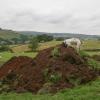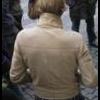RCT Discussion / Corkscrewed's Guide to Making Disney Parks in RCT
-
 29-February 04
29-February 04
-

Corkscrewed Offline
Keep in mind that this is my interpretation, of course. However, I honestly do think I am right in the following analysis, which is why I'm bothering to write all of this. You can agree or disagree, but I think this may clarify a lot of conceptions. Hopefully, this will help explain what "is" Disney and what "is not" Disney.
[font="Arial"]
Introduction
There have been a lot of Disney RCT parks throughout the history of the game. And while there has been the occasional diamond in the rough, most of the advertised projects, frankly, stink. It's not necessarily that the parks themselves are bad. In fact, many parks would not receive such high scrutiny if they did not have the Disney monicker. However, the fact that these park makers choose to attach the Disney name onto their parks brings high expectations and high criticism.
Naturally, you can't do everything that Disney does in real life in RCT to convey that Disney feeling; there are some departure points, but other aspects are similar as well. The following should help you achieve a better sense of Disney magic, at least in theory. Executing it, however, will still be up to the skill of the player. That said, I feel that many people in this RCT community definitely have the skills and potential. It's the understanding that they lack.
Atmosphere[/font]
The number indication of a Disney park is its overwhelming atmosphere. All Disney parks transport guests to a far away place, making fantasy believable. This is often achieved through overwhelming detail. Everything about the landscaping, architecture, theming, and coloring evokes feelings of that certain place. Usually, this means a Disney park will inevitably be closed in, creating a cozy, comfortable setting. A wide open plaza is not the first thing people think of when they ponder Disney. Though such settings occur (and I'll explain those later), the strongest Disney magic by far comes in enclosed areas.
Consider the classic areas of Fantasyland, Frontierland, Adventureland, Tomorrowland, and New Orleans Square. In each case, buildings line both sides of a path that winds its way through the themed land. This path is not straight, either. Though the overall direcion may be axial, there are plenty of nooks and cranies where guests can duck into a store for some shopping or slip under a canopy for some rest. This is the prime opportunity for detail to be expressed, because this is where pedestrians, strolling at a leisurely three miles an hour, will notice it.
This means that an RCT Disney park should usually feature close-knit paths in their themed areas, usually three to five squares wide, that meander along rather than flow straight and rigidly. Another major no-no is a big plain plaza ten or fifteen squares wide. Remember that people are not comfortable in the middle of a huge plaza. In such settings, guests will tend to stray to the edges, not stand flat in the center. It's based on a natura, instinctive human psychological need to be anchored. Human beings feel a lot more anchored if there is a wall or other structure nearby to grab a hold of if need be. Being stranded in the middle of a large flat space, however, implies vulnerability, at least at a subconscious level. If you are going to make a huge plaza, fill the middle with a fountain, which provides a new edge and gather spot. Landscape the fountain with some flowers and shrubs if you like as well.
Of course, there are instances in Disney parks where things open up. Where you don't have buildings surrounding you on both sides. EPCOT's World Showcase, DCA's Paradise Pier, and even the Rivers of America region are prime examples. How are those still Disney then, if they are wide open and lack a cozy atmosphere?
Contemplate the one thing all three examples share, then: water. In effect, whenever there is a wide open space in a Disney park, there is inevitably water nearby. Those who may have wanted to point out DLP's Discoveryland as an exception to my list of themed land examples above should remember this. Another basic human impulse is to be near water. In fact, 90% of America's popular lives on the coasts, near water. Water has a natural cooling and relaxing effect, and it is subconsciously recognized as the bringer of life. In a more social context, the concept of a waterfront has always struck the romantic chords of people, and that is what exists in Disney parks whenever there IS a wide plaza setting. In these cases, the water acts as the other boundary. On one side, you have your buildings, constructed in sparkling detail, acting as one anchor of stability. On the other side, you have your waterfront, equally nicely themed and landscaped, providing spiritual satisfaction.
Translated to RCT, this means if you want to create a large open space, add water nearby. The best method is to create a lake. A very wide river will also do. The main point is to create something interesting on both sides of the path.
Variety is the key. EPCOT features both areas where buildings surround the guests (Future World) and areas where buildings do not, and water takes the place on one side (World Showcase). DCA is just the same, with the front and back sporting different spaces but similar cozy atmospheres. The Magic Kingdoms, of course, are almost exclusively urban in that most of the time, you have buildings on either side, but some parts also have waterfronts. Frontierland in WDW has this. Disneyland's Rivers of America is another example.
But to return to the original point, all Disney parks have overwhelming atmosphere that suspend reality for guests and make them believe that they really are in New Orleans, or Africa, or Europe, or in some far off futuristic city.
Architecture
The vital method of establishing atmosphere, however, is through architecture. In RCT, this is your best way to establish a clear and powerful Disney aura. Disney architecture is intensely detailed and is greatly aided by adjacent landscaping. Some shrubs can very strongly add texture and interest to a building. Similarly, you don't want to have a boring building with windows and walls. One simple beginning tactic is to make a plain building, then adorn the heck out of it. Sure, it's a bit amateur, and veterans may see through it, but if you do it right, most people won't. Plus, gradually, you will evolve to incorporate detailing into your building so that it becomes more than just a "decorated shed" (to quote Robert Venturi). It will become an integrated being, where the parts total more than the whole--a process called synergy (to quote my structures professor, Goetz Schierle).
You look at any Disney park and you will realize how strongly architecture plays into creating that atmosphere. Main Street is the quintessential example: the moldings, windows, colors, and detail transport visitors back to that Victorian era. Furthermore, awnings and recessed walls create depth and texture that adds interest and stimulates the eye. This stimulation is what really fools the brain into believing the illusion. Yes, it IS an illusion, but when it's done this well, who cares? Just enjoy it.
Thus, in RCT, this means you should aim towards Foozy-style detail. Now, I'm not saying build like Foozy, since some people abhor his style (though I love it and I wouldn't oppose that method). My point is that a simple 2x2 building will never do. You're going too need railings, awnings, shutters, crownings... anything to add to the eye candy. Make your buildings varied. If you really have the time, design each individual building at a time. I've found that using a variation of the 2x2 method, where I building small buildings but fill them with detail, is more effective than creating one massive building and then carving in facades, at least in RCT. Where styles are similar, alternate colors, creating pleasant and harmonious themes that people will enjoy. With rare exceptions, don't create clashing color. Each building, while maintaining its own distinct character, should blend into the next. Viewers should be naturally drawn to looking at the architecture, not loudly forced into by blaring pinks and obnoxious oranges.
Another note about architecture: from a peep's perspective, these buildings should be tall enough so as to block views of other lands (exceptions occur, of course). This means you should consider the view angles. If a street is narrow, a one or two story building may be sufficient to shield unnecessary views. If you have a wide street, the building may be three or four stories.
Also, most Disney hotels really aren't that tall. So while pulling a Myttica Resort is impressive (and yes, that's a knock on myself; I know my own strengths and flaws ), it's not necessarily accurate. In fact, for hotels, stick to six stories or less.
), it's not necessarily accurate. In fact, for hotels, stick to six stories or less.
Rides
Here's an often overlooked area, and not necessarily for the reason you'd expect. Naturally, Disney rides are well themed. Naturally, they have plenty of detail. Naturally, they're enclosed. They're also OUT OF THE WAY. What I mean is that you will NEVER have a ride sitting in the middle of a giant plaza, Cedar Point style (the carousels are the only exception, and that's only because they are still surrounded by the buildings that maintain a warm, cozy, inviting atmosphere). Your attractions should be reached by branching off of the main paths. They should not be plopped right in the middle of them. This is the one key difference that I always notice whenever I think a park "isn't Disney," and it's something so minor that most people won't think to implement that detail, but nevertheless, it is part of what makes Disney parks Disney.
After all, Walt wanted circulation to be simple. You went through a path, you branched off, you can back, you continued. That was the ultimate idea of the Hub, and it is maintained in the parks as well. You look at EPCOT's World Showcase and you see attractions tucked behind the waterfront. Fantasyland's dark rides are within the buildings that line the sides. You go around rides, not through them.
That leads to a second point: rides rarely interact with other rides. Each attraction is an island upon itself, to be reached, experienced, then left. You rarely see another ride while your on this one. The exceptions--the monorail, Disney Railroad, and Peoplemover--are all transportation rides that RELY on interaction, lest they be boring typical transports. Everything else, however, is pretty much self contained.
In essence, that means your rides in RCT should branch off from the main path and be contained away from the main path. Pedestrians experience one thing while walking and taking in the sights; they experience another while riding and taking in the thrills.
And it goes without saying that all Disney rides are ideally themed up the wazoo, so if you have a parking lot coaster in your Disney park, you obviously don't get it.
At this point, I'd also like to point out that one thing that differentiates IOA from Disney (aside from the company that owns it and the inspiration for the ride themes of course). The Incredible Hulk Coaster mingles with a main path... something you won't see in a Disney park, and the coaster itself is relatively unthemed (at least compared to a Disney coaster, which is at least enclosed when it's not really themed). Other than that, though, you actually could say that IOA follows the Disney formula pretty well. For my part, if someone building a Disney park using the IOA layout, I wouldn't have a huge problem with it.
Naming
OZONE a year and a half ago would have cringed at this. Disney always gets the names right. They're not always the most complicated verbal structures, but they get the job right. They get the point across. They add to the ambience of the park. Seriously, name one bad Disney ride name. You might be able to, but I can probably give you a reason for that name. This also extends to restaurants, shops, and themed lands.
I can't exactly give you tips on the right names. You either have that skill or you don't. However, I will say that you should be creative and by versatile. Have different types of words and don't be repetitive. Restaurants can be cafes, grills, diners, eateries, ranches, pubs, taverns, and more. Shopes can be stores, shoppes, galleries, etc... It might also help to do some research into the themes to see if there are any common native terminologies that could help. On the other hand, sometimes the cheesiest name is the best name. Case in point, Tower of Terror. I mean, that's about as sophisticated as the Shaft of Fear, but it works.
Landscaping
This is easy... kind of. If you make a totally flat park, it's okay! Disney parks all start out as big empty plots of dirt anyway. It's still best if you give minor variations in land elevation, though. You never know how well a terrace one step down from the main path next to a waterfront will accentuate your environment.
Of course, you're also going to need flowers, and lots of them. Shrubs are another must, though trees are not as needed as you might think. In other words, DO NOT overtree the interior of your park (you can tree the fuck out of the exterior perimeter if you want, though). In fact, one of my main gripes with Nate's Disney's Beautiful World was that it had too much trees and not enough buildings. Most Disney parks surround people with architecture, not Jungles. The only exception, really, is Animal Kingdom, and that still has a mix of architecture and buildings. In that case, the vegetation is so thick that it basically acts like a wall, so that if you wanted to sneak off the path and trespass into another place, say backstage, you wouldn't be able to. So if you look at your park and can imagine a peep wandering off a path into some other place, chances are you're going to have to add some buildings, thicking up that vegation, or provide some other sort of isolative device.
In Conclusion
There is no perfect formula to create a great Disney park, of course. Part of that takes practice and part of it really takes magic. IMO, Nate didn't get that Disney feeling with DBK, but he nailed it with DDI. Sometimes, it takes an epiphany (there goes that term again). It takes practice, and truth be told, some people might never be able to achieve it.
However, the above guidelines are merely suggestions to help direct and orient your approach, giving your pointers so that you can come closer, or if you already have the touch, help your perfect your park. Mies van der Rohe said, "God is in the details." That's one important adage to remember in your Disney park.
Finally, I firmly believe that RCT 2 will achieve a Disney atmosphere much better than RCT 1, simply because custom scenery and its theming structure allows for much more complicated buildings and theming than RCT 1. If you want to approach Disney detail in RCT 1, you basically have to be Fatha, X-Sector, Mantis, or RRP level, basically, and that's not a lot of people. I'd include CoasterEd in that list, but I just can't imagine him doing a Disney park.
That concludes my Guide to Disney. If you made it this far, congratulations. You're not one of those lazy fools who thinks reading is for morons. Furthermore, you've earned my appreciation for sticking through all of this.
Good luck and happy parkmaking! -

 Steve
Offline
*Starts new Disney park*
Steve
Offline
*Starts new Disney park*
Seriously though, this is great Corkscrewed. This should help alot of others trying to pull of a decent Disney park. You also seem to have way too much free time to figure all this shit out, lol.
Great job on this, I know I'll definately use those tips when building.
Edit--Hey! Where's the name filter!? -

 Janus
Offline
Yeah, great read. Some of those tips could be useful for none-Disney parks too.
Janus
Offline
Yeah, great read. Some of those tips could be useful for none-Disney parks too.
Thank you for taking the time to write that. -
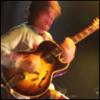
 Jellybones
Offline
Guess what.
Jellybones
Offline
Guess what.
No one is going to pay attention to all that.
Which is a shame, because you've basically expressed all the sentiments that I'd like to express, except that you've got the RCT cred and ability. Those who do read this and put it to use will be well off. I especially liked the name part...for those of you who don't know, that means no "Disney's Xtreme Xperience", okay? -

 Critic
Offline
Those are good tips for even non-Disney related projects, and sounds like a nice thing to improve my architecture...
Critic
Offline
Those are good tips for even non-Disney related projects, and sounds like a nice thing to improve my architecture...
Good read! -
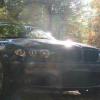
 Ride6
Offline
That explains why I can currently build a Disney park. I feel that I may reach that detail level in another 6 months- 1 year but at the moment I don't feel ready to attempt a Disney park. I know my limits and that's beyond them. I agree about DFK not really succeeding in the "Disney feel" but DDI having it (in spades).
Ride6
Offline
That explains why I can currently build a Disney park. I feel that I may reach that detail level in another 6 months- 1 year but at the moment I don't feel ready to attempt a Disney park. I know my limits and that's beyond them. I agree about DFK not really succeeding in the "Disney feel" but DDI having it (in spades).
I'll keep this in mind for when I reach the skill level and feel ready to build a Disney park of my own.
ride6 -

 Meretrix
Offline
That was lovely Corky....
Meretrix
Offline
That was lovely Corky....
Um....don't know what else to say........(that's a first )
)
Very helpful tips for anyone building a Disney Park (myself included)
Maybe do a section like this for each chain of parks......maybe not. -
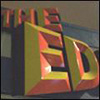
 Coaster Ed
Offline
Coaster Ed
Offline
Is that a challenge?[font="Arial"]
I'd include CoasterEd in that list, but I just can't imagine him doing a Disney park.
[/font]
That was a lot of good advice Cork. I especially enjoyed the part about atmosphere. The biggest thing about Disneyland I think, Walt's master plan so to speak, is that you forget you're in a theme park. Each themed area is like it's own little world and there is nothing to remind you that you are actually in an amusement park. What really impressed me was when I learned that the Matterhorn when seen from the other lands is in the right scale to be a mountain in the background. That's planning. And the attention to detail is second to none. I use a lot of thse same principles of atmosphere and detailed theming in my parks (when I'm not driving myself crazy trying to build something that's impossible anyway). Of course now WDE has to be the epitome of Disney-ness or you'll never hear the end of it.
-

 Tech Artist
Offline
Very nice Corky!
Tech Artist
Offline
Very nice Corky!
This whole guide will be very useful to anyone one who is gonna guild a Disney park, even me. I think will use this for the duration of my Disney park cause there is alot of things in there that could vastly improve my park.
Also after i finish my Disney park and Asiago(if Asiago ever decide to actully finish it which isn't looking so good) and maybe a couple parks down the rode, I might try to do another traditional Disney park again(mainly because in my current Disney park i screwed up the map size and the Main Street layout) and i'll defitnetly look up this guide to use(if i remember it by then).
The guide you wrote definetly hits a lot of things Walt wanted in his parks and what his parks have now which is a big plus. My favorite part
would have to be the Atmosphere, it was very interseting reading about how to create an Atmosphere in any park, and it didn't just stick to only Disney parks.
Thanx for this guide Corky it is very usseful and hopefully alot of people will use it for non Disney and Disney parks.
-

 Coaster Ed
Offline
Damn you Corky, you've just added another park to my list of projects I must complete before I retire. The Disney fantasy park.
Coaster Ed
Offline
Damn you Corky, you've just added another park to my list of projects I must complete before I retire. The Disney fantasy park. Oh yes, it's coming. I'll be 80 before I get around to it but it's coming. And we have you to thank for it.
Oh yes, it's coming. I'll be 80 before I get around to it but it's coming. And we have you to thank for it.
-

 thorpedo
Offline
thorpedo
Offline
I love you.Corkscrewed's Guide to Making Disney Parks in RCT

Maybe now this will clean up some of the Disney shit-o-rama's that seem to make up all of the AD. Nice guide, BTW. Very informative. -

 Panic
Offline
Panic
Offline
That was deep, man.[font="Arial"]Contemplate the one thing all three examples share, then: water. In effect, whenever there is a wide open space in a Disney park, there is inevitably water nearby. Those who may have wanted to point out DLP's Discoveryland as an exception to my list of themed land examples above should remember this. Another basic human impulse is to be near water. In fact, 90% of America's popular lives on the coasts, near water. Water has a natural cooling and relaxing effect, and it is subconsciously recognized as the bringer of life. In a more social context, the concept of a waterfront has always struck the romantic chords of people, and that is what exists in Disney parks whenever there IS a wide plaza setting. In these cases, the water acts as the other boundary. On one side, you have your buildings, constructed in sparkling detail, acting as one anchor of stability. On the other side, you have your waterfront, equally nicely themed and landscaped, providing spiritual satisfaction.Â
[/font] -

 Ride6
Offline
Ride6
Offline
 Cork- You should pin this in the Ad District where foolist souls advertise their Disney and Universal parks (since most of this stuff applys to Universal too)
Cork- You should pin this in the Ad District where foolist souls advertise their Disney and Universal parks (since most of this stuff applys to Universal too) 
Just my thought, ignor it or embrace it.
ride6 -

Corkscrewed Offline
Another way, eh...?
*makes 59 copies of this topic and pins two or three in every forum*
 Tags
Tags
- No Tags
